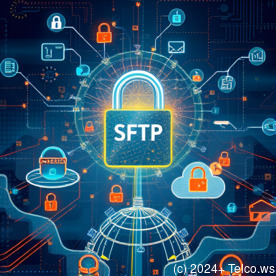
Comprehensive Guide to Credential Stuffing Protection
As organizations increasingly move their operations online, the security risks associated with digital identities have escalated. One of the most pressing threats in this landscape is credential stuffing, a cyber-attack method that exploits users' tendency to reuse passwords across multiple sites. This article will explore the intricacies of credential stuffing, its implications, methodologies for protection, tools available for defense, best practices, and exclusive insights on how organizations can bolster their security posture against this growing threat.




What is Credential Stuffing?
Credential stuffing is a type of cyber-attack where cybercriminals use stolen usernames and passwords from one breach to gain unauthorized access to accounts on other platforms. Given that many users recycle passwords across various services, credential stuffing attacks can yield high success rates.




How Credential Stuffing Works
- Data Breaches: Cybercriminals obtain large databases of usernames and passwords through data breaches. These breaches often stem from insecure databases, malware, or phishing scams.
- Password Spraying: Attackers take a list of commonly used credentials and attempt to log in to hundreds or thousands of accounts on different services. This technique uses automated bots, significantly speeding up the attack process.
- Account Takeover (ATO): Once legitimate credentials are successfully entered into target accounts, attackers can take over those accounts, often leading to significant financial loss, data theft, or reputational damage.




Impact of Credential Stuffing
- Financial Loss: Credential stuffing can lead to direct financial losses for consumers and businesses, especially in e-commerce, banking, or any digital platform processing payments.
- Data Breach: With access to user accounts, attackers may steal sensitive information including credit card numbers, personal identification numbers, and confidential business records.
- Reputational Damage: Organizations that fall victim to credential stuffing attacks may suffer reputational harm, leading to decreased user trust and potential loss of customers.
- Increased Security Measures: Once an attack occurs, organizations often face increased scrutiny, regulatory repercussions, and additional costs related to security enhancements.




Why is Credential Stuffing Protection Important?
- Prevalence of Reused Passwords: Most users tend to reuse passwords across multiple platforms—a practice that significantly increases the risk of account compromise. Effective credential stuffing protection reduces the chance of attackers exploiting these behaviors.
- Rising Volume of Cybercrime: The frequency of credential stuffing attacks has skyrocketed, making it a significant threat that organizations must prepare for. According to a report by Akamai, credential stuffing attacks have increased by 45% year-over-year, indicating a growing trend of ongoing risk.
- Enhanced User Trust: By implementing robust protection strategies against credential stuffing, organizations can foster greater trust with their users. Customers are more likely to remain loyal to a brand that takes their security seriously.
- Regulatory Compliance: With regulations like GDPR, CCPA, and others, organizations are required to take necessary steps to protect user data. Failing to protect against credential stuffing can lead to potential fines and legal repercussions.




Challenges in Protecting Against Credential Stuffing
- Evolving Attack Techniques: Cybercriminals continually evolve their means and methods to bypass security barriers, making it difficult for organizations to stay ahead of threats.
- Cost of Implementation: Implementing comprehensive credential stuffing protection measures, including advanced technologies and strategies, can require significant investment and resources.
- User Education: Most threats arise from user behavior. Therefore, educating users about creating strong, unique passwords and how to recognize phishing attempts is crucial, yet often overlooked.
- Integrating Solutions: Organizations may struggle to seamlessly integrate protection solutions with existing systems, leading to confusion, inefficiencies, and potential user friction.




Strategies for Credential Stuffing Protection
- Multi-Factor Authentication (MFA): Implementing MFA adds an extra layer of security, requiring users to verify their identity through multiple factors (e.g., something they know, something they have, or something they are) before granting access. This significantly reduces the effectiveness of stolen credentials.
- Password Policies: Establishing strict password policies can mitigate risks. Organizations should mandate the use of strong, complex passwords that are unique for each account and enforce password change intervals.
- Rate Limiting: Rate limiting restricts the number of login attempts an IP address can make within a specific timeframe. If a particular address exceeds the defined threshold, it can be temporarily blocked or challenged with CAPTCHA tests to reduce automated attacks.
- IP Blacklisting and Geolocation: Identifying and blocking IP addresses that exhibit suspicious login behavior can deter credential stuffing attempts. Additionally, geolocation analysis can help spot unusual access patterns (e.g., logins from unexpected locations).
- Behavioral Analytics: Employing behavioral analytics tools enables monitoring of user behavior patterns. By identifying anomalies in login attempts, organizations can flag potential credential stuffing attacks for analysis and intervention.
- User Education and Awareness: Cultivate user awareness regarding the importance of creating strong, unique passwords. Offer educational resources on identifying phishing attempts and understanding MFA to enhance overall security.
- Monitoring and Response: Implementing a real-time monitoring system allows organizations to track login attempts and respond swiftly to suspected attacks. Establishing incident response protocols will ensure timely action against account takeovers.




Tools and Solutions for Credential Stuffing Protection
- Cloudflare Bot Management: A solution specifically designed to help identify and mitigate bot attacks, including credential stuffing, through machine learning and behavior analysis.
- Akamai Bot Manager: Provides real-time analytics and mitigation strategies for identifying malicious bots responsible for credential stuffing and other automated attacks.
- Login Lockdown: This WordPress plugin helps limit numerous login attempts within a specified time, making it harder for attackers to employ credential stuffing strategies.
- Auth0: Offers secure access management with built-in MFA, behavioral analytics, and intrusion detection systems to help protect against credential stuffing.
- Imperva: A security solution that provides web application protection, monitoring, and bot mitigation strategies designed to defend against credential stuffing attacks.




Best Practices for Effective Credential Stuffing Protection
- Implement MFA Across Applications: Make MFA mandatory for all application logins, ensuring that even if credentials are stolen, unauthorized access remains blocked.
- Utilize Password Managers: Encourage users to leverage password managers to help generate complex, unique passwords for each account without the need to remember them individually.
- Continuously Review Security Posture: Regularly assess and update security measures to adapt to evolving threats and address any vulnerabilities.
- Regularly Train Employees: Conduct security awareness training sessions for employees to help them recognize threats and understand the importance of good password hygiene.
- Establish a Clear Incident Response Plan: Prepare a detailed incident response plan to tackle potential credential stuffing incidents swiftly, minimizing damage.




Conclusion
Credential stuffing remains one of the most common and dangerous forms of cyber threats targeting businesses and users alike. Protecting against it requires a multifaceted approach combining technological solutions and behavioral changes. By employing strong protective measures such as MFA, password policies, rate limiting, and user education, organizations can effectively mitigate the risks associated with credential stuffing.
As the landscape of cyber threats grows more sophisticated, proactive measures are essential. Organizations must not only invest in protective technologies but also foster a culture of security awareness among their users.
Exclusive Offer: Credential Stuffing Protection Consultation Package
To aid organizations in fortifying their defenses against credential stuffing, we are offering a specialized consultation package for $1,499 USD. This comprehensive package includes:
- A detailed analysis of current security measures related to credential protection.
- Customized recommendations tailored to your organization’s specific needs and infrastructure.
- Implementation assistance for selected protection strategies and tools.
- Employee training sessions focused on best practices for password security and identification of credential-related threats.
- Ongoing support for three months to ensure security measures are effectively maintained.
Don’t let your organization fall victim to credential stuffing attacks! Interested in securing your specialized consultation package for $1,499? Please proceed to our Checkout Gateway and use our Payment Processor to pay the indicated amount of $1,499 in favor of our Company, following the instructions. After payment, contact us via email, phone, or our site with the payment receipt and your details to arrange the consultation.
Investing in credential stuffing protection is a necessity in today's digital age. Enhance your organization's security posture and protect valuable user data with expert guidance and tailored solutions designed to meet your unique challenges. Secure your consultation now and safeguard your digital assets today!
